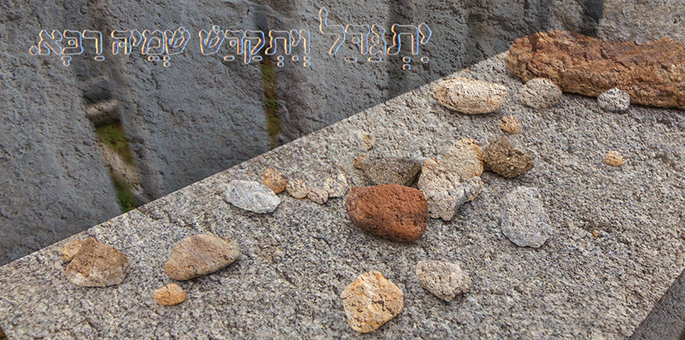
By Nechemia Schusterman
I first met the family some seven years ago, when I was called to perform a bris on their newborn son. A mutual friend had connected us, and I recall finding it interesting that although the mother’s husband and father were both not Jewish, she still cared deeply that a bris be done, and by an Orthodox mohel no less.
I chalked it up to a line I often heard from my uncle (the legendary Rabbi Shlomo“Schwartzie” Schwartz) that Jews reconnect with their roots during three major lifecycle events: “hatch, match, and dispatch”—i.e., birth, marriage, and death.
A couple of years later the family requested my mohel services again, after the birth of their second son. I noted that the baby’s grandmother (the only Jewish grandparent), who had not been at the last bris, was now present. I was told that she was unwell and didn’t think much more of it.
A few years later (at this point, we had become Facebook friends), I realized the first child was now old enough to attend our Chabad Hebrew School, so I reached out, and not long thereafter the parents signed him up.
With time, our friendship developed. We shared a Shabbat meal and got to know each other better. As they made friends with other Hebrew school families, they joined the orbit of our lives and our Chabad center, participating in Chanukah and other Jewish holiday events and activities.
Then I received a message. Grandma, the one who missed the first bris, who had battled illness for the past 20 years, had passed suddenly and unexpectedly. Could I help?
When the funeral home called to confirm my availability, I immediately agreed. But then I got the details.
“You’re an Orthodox rabbi, so I assume you will want taharah (ritual cleansing of the deceased – a very important part of the burial process) done?” the funeral director asked.
“Yes,” I confirmed.
She went on to explain that husband of the deceased—a fine Italian man—as well as the non-observant Jewish family members, didn’t see the value in the taharah. Since it was all so sudden, the expenses were unexpected.
That made sense to me, so I offered to trade my honorarium for the taharah, which would cover the cost with a bit to spare. The funeral director was so moved that she agreed to co-sponsor it.
Problem solved.
She then explained that the service would be held at the chapel, and the internment at a certain cemetery with which I was not very familiar, but I knew it was not a Jewish one. This again presented an issue.
Not wanting to hurt or distance the grieving family—with whom we’d become quite close—I asked for some time to do my homework. I made a flurry of phone calls until I reached one of the top experts in this area of Jewish law, and was given guidance on how to proceed under the circumstances.
With the matter resolved, we were able to proceed.
Later, when I met with the family to review the life of the deceased and to go over the last few details of the funeral, it was clear that everyone—the family, the funeral home, and I—had joined together to ensure that this woman would be buried in the holiest way possible.
We also had to set up arrangements for the shiva, the traditional seven days of mourning. The family intended to observe shiva to a certain degree, but making a minyan and saying Kaddish was not on the agenda.
By Divine Providence, the day of the funeral was the yahrzeit (anniversary of passing) of my mother. I was having trouble putting together a minyan for afternoon prayers, since many people would still be at work then.
I suggested we merge forces and do a shiva and yahrzeit minyan at their home after the funeral. They had the 10 Jewish men needed for a minyan, I needed to say Kaddish, and everyone would gain.
And that’s exactly what we did. I gave a few basic instructions and the service began. Many of the participants were almost entirely unfamiliar with their Jewish identity, but all agreed to wear a yarmulke and say “amen” at the appropriate places.
As I left the shiva home, I reflected upon the magnitude of what had just taken place.
We were of two worlds, so seemingly diverse with no apparent space for intersection, but when it came down to it, not only did we join forces for a mitzvah, we crossed the all-too-narrow bridge that divides the Orthodox world and less-observant one, coming together for the greater good of both.
I imagined the Baal Shem Tov, Rabbi Levi Yitzchak of Berditchev, and the Lubavitcher Rebbe— some of the greatest lovers of the Jewish people—looking down at this ragtag group of Jews in suburban Boston and grinning happily, saying amen to the blessings, proudly witnessing our display of true unity.
May the soul of Chaya Bina bat Yitzchak have an aliyah, and may her family find comfort and healing.
Rabbi Nechemia Schusterman and his wife Raizel run the Chabad of Peabody Jewish Center. Rabbi Schusterman is a proud father who enjoys many hobbies, including exercise, skiiing and writing. Read more of his writings at Rabbi Schusterman.com.
Art by Rivka Korf. Rivka uses her creativity and expertise to create masterful compositions and illustrations. She shares her love of coffee with her husband and passes on her appreciation of art and design to her children.
Source: Chabad.org